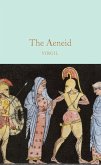The Death of the Lion is an 1894 short story by Henry James. The narrator suggests writing an article on Neil Paraday; his new editor agrees. The former spends a week with Neil and writes the article whilst there, alongside reading Paraday's latest book. His editor rejects the article however; he decides to write an article for another newspaper, but it goes unnoticed. Neil Paraday gets excited about writing another book, despite the fact that he doesn't seem successful still. However the narrator comes across a praiseful review in The Empire. Mr Morrow, a journalist suddenly interested in writing about Neil Paraday's life now that he is successful, comes round and ends up scaring the writer; the narrator manages to see him off. He tells Mr Morrow all there is to know about Paraday is in his work; the journalist is not amused. Later, he publishes an article on Neil's house in the Tatler. Embracing his fame, Paraday takes to going to London luncheons with women. The narrator meets Miss Hurter, an American admirer of the writer's, in his house. As the writer is again busy with Mrs Wimbush, he explains to the girl that the best thing she can do is not to bother Paraday and only admire him from afar, so as not to interfere with his writings. Nevertheless, he keeps her autograph album to show it to him. Later, he meets with her to read passages from Paraday; once while they are at the opera he points Paraday out to her. Read the complete novel for further story....
Dieser Download kann aus rechtlichen Gründen nur mit Rechnungsadresse in A, B, BG, CY, CZ, D, DK, EW, E, FIN, F, GR, HR, H, IRL, I, LT, L, LR, M, NL, PL, P, R, S, SLO, SK ausgeliefert werden.









